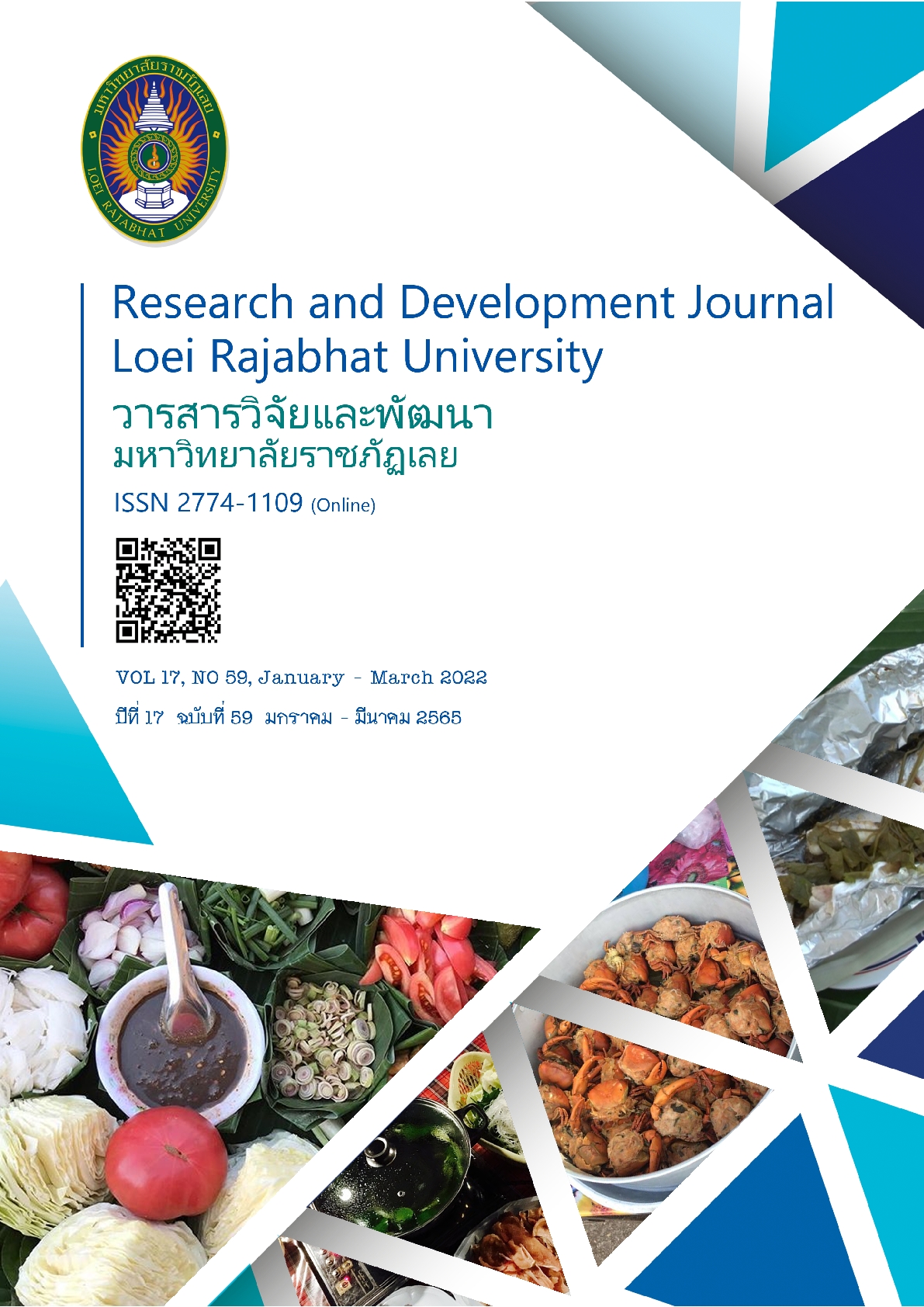Tourism Attraction Carrying Capacity Assessment in Mae Ngao National Park, Mae Hong Son Province
Keywords:
carrying capacity assessment, tourism, Mae Ngao national parkAbstract
This research aimed to assess the carrying capacity of tourist attractions in Mae Ngao National Park, Mae Hong Son Province. For supporting the number of of tourists who come to use the service within the Mae Ngao National Park. Data collection was conducted by assessing the physical carrying capacity, facility carrying capacity, ecological carrying capacity and social-psychological carrying capacity. From the study, it was found that physical carrying capacity can accommodate 94,365 persons/year. Facility carrying capacity can accommodate 316,629 persons / year. From the statistics of the number of tourists from 2017-2020, it was found that in 2018, the number of tourists was the most at 9,217 persons. Accounted for 9.77 percent of physical carrying capacity. And 2.91% of the facility carrying capacity. Which has little impact or the number of tourists is still lower than the carrying capacity both of two these sides. For bio-physical or ecological carrying capacity found that root cover emerged at 34.62 %. This was at a medium level of root exposure severity. The vegetation cover studied from sapling showed that Eurya acuminata DC. was highly impacted while Acronychia pedunculata (L.) Miq. was impacted at a severe level. In the case of seedling, it was found that Litsea sp. was at a high level of impact, and Pavetta tomentosa Roxb. ex Sm. was at a severe level of impact. Lastly, the results of social-psychological carrying capacity assessment collected by using questionnaire revealed. That the informants perceived the crowding of tourist visiting at Mae Ngao National Park at a low level (14.70%). The number of tourists does not exceed the social-psychological carrying capacity.
References
กรมอุทยานแห่งชาติ สัตว์ป่า และพันธุ์พืช. (2549). รายงานฉบับสุดท้าย โครงการศึกษาขีดความสามารถในการรองรับได้ของพื้นที่อุทยานแห่งชาติเอราวัณ จังหวัดกาญจนบุรี. สืบค้นจาก http://park.dnp.go.th/file/ขีดความสามารถ%20อช.เอราวัณ.pdf.
กรมอุทยานแห่งชาติ สัตว์ป่า และพันธุ์พืช. (2562). สถิตินักท่องเที่ยว ปี 2560 – 2563. สืบค้นจาก http://portal.dnp.go.th/Content/rescue?contentId=17712.
ดรรชนี เอมพันธุ์. (2546). หลักนันทนาการและการท่องเที่ยวทางธรรมชาติ. เอกสารประกอบการสอนวิชา 308511. ภาควิชาอนุรักษวิทยา คณะวนศาสตร์ มหาวิทยาลัยเกษตรศาสตร์.
นิอร จิตรจง. (2560). การประเมินขีดความสามารถในการรองรับการท่องเที่ยวของอุทยานแห่งชาติเขาสก (วิทยานิพนธ์ปริญญามหาบัณฑิต). มหาวิทยาลัยเกษตรศาสตร์, กรุงเทพฯ
บรรลือศักดิ์ วงษ์ภักดี. (2552). ขีดความสามารถในการรองรับการใช้ประโยชน์ด้านนันทนาการของอุทยานแห่งชาติเขาชะเมา-เขาวง (วิทยานิพนธ์ปริญญามหาบัณฑิต). มหาวิทยาลัยเกษตรศาสตร์, กรุงเทพฯ
พิมพ์ลภัส ขันหลวง. (2545). ผลกระทบทางจิตวิทยาและการกำหนดขีดความสามารถในการรองรับทางจิตวิทยาของแหล่งนันทนาการประเภทน้ำตก (วิทยานิพนธ์ปริญญามหาบัณฑิต). มหาวิทยาลัยเกษตรศาสตร์, กรุงเทพฯ.
หิรัญ หิรัญรัตนพงศ์, เอกนรินทร์ ธนะกิจไพรินท์, จิรัชยา ชานาญไพร และปิยนาถ ขุนศรี. (2560). การประเมินขีดความสามารถในการรองรับนักท่องเที่ยวของอุทยานแห่งชาติเขาคิชฌกูฏ (ส่วนรอยพระพุทธบาทพลวง). วารสารวิทยาศาสตร์บูรพา, 22(3), 557-568. สืบค้นจาก http://ojslib3.buu.in.th/index.php/science/issue/view/620
อารีรัตน์ ภาคพิธเจริญ. (2548). ขีดความสามรถในการรองรับของแหล่งท่องเที่ยวเชิงนิเวศโดยชุมชน กรณีศึกษาหมู่บ้านท่องเที่ยวเชิงอนุรักษ์บ้านทรงไทย จังหวัดสมุทรสงคราม (วิทยานิพนธ์ปริญญามหาบัณฑิต). มหาวิทยาลัยเกษตรศาสตร์, กรุงเทพฯ.
Bateson, J. and Hui, M. (1992). The Ecological Validity of Photographic Slides and Videotapes in Simulating the Service Setting. Journal of Consumer Research, 19, 271-281.
Kongkaew, C., Butrat, P., Pongsuwan, N., and Boupech, P. (2013). Carrying Capacity and Tourism Management Measures for Shallow Reef at Khai Nok Island, PhangNga Province. Environment and Natural Resources Journal, 11(1), 70-87. Retrieved from https://www.thaiscience.info/Journals/Article/ENRJ/10892145.pdf
Yamane, T. (1973). Statistics, An Introductory Analysis, (2nd ed.). New York: Harper and Row.
Downloads
Published
How to Cite
Issue
Section
License
Copyright (c) 2022 Research and Development Journal, Loei Rajabhat University

This work is licensed under a Creative Commons Attribution-NonCommercial-NoDerivatives 4.0 International License.
ข้อความที่ปรากฎในวารสารฉบับนี้เป็นความคิดเห็นของผู้เขียนแต่ละท่าน สถาบันวิจัยและพัฒนา มหาวิทยาลัยราชภัฏเลย และกองบรรณาธิการ ไม่จำเป็นต้องเห็นด้วยและไม่มีส่วนรับผิดชอบใดๆ
สถาบันวิจัยและพัฒนา มหาวิทยาลัยราชภัฏเลย ขอให้ผู้อ่านอ้างอิงในกรณีที่ท่านคัดลอกเนื้อหาบทความในวารสารฉบับนี้






